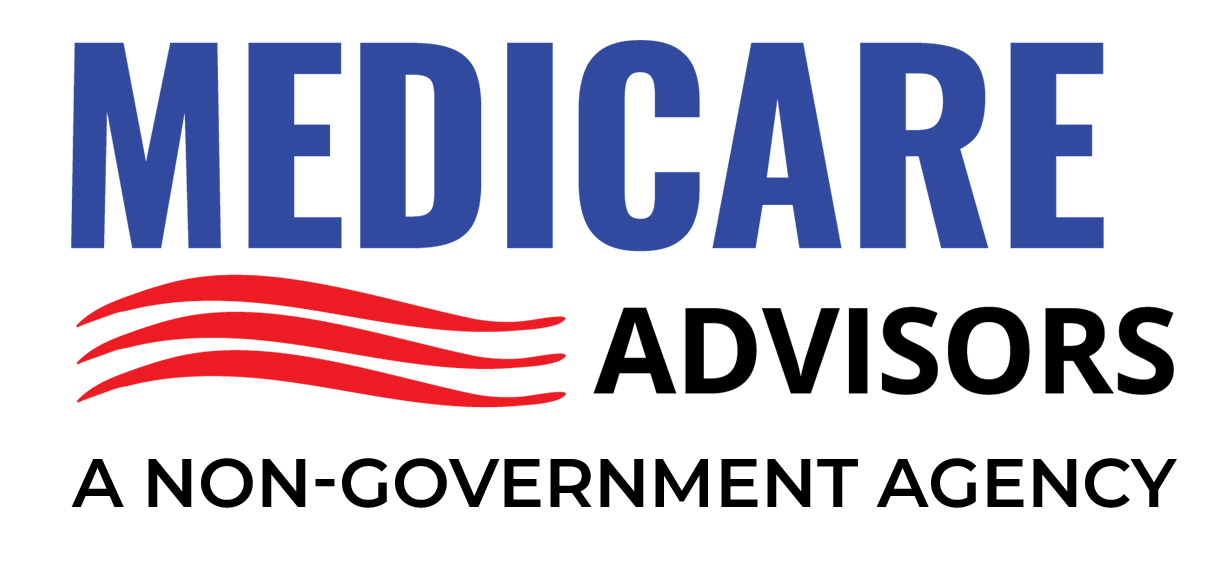Entering your senior years with the right healthcare coverage can feel like a daunting process, especially when it comes to navigating the Medicare system. For many older adults, Original Medicare (Part A and Part B) is a fantastic start, but it sometimes leaves “gaps” in coverage—for instance, deductibles, coinsurance, and copayments. This is where Medicare Supplement Plans (also known as Medigap) step in, providing extra protection from potentially sky-high out-of-pocket costs.
As a Medicare journalist, I’ve encountered countless questions from older adults (and even from their adult children) about which Medigap plan is the best fit. While every person’s situation is unique, there’s a handful of plans that often rise to the top in popularity and practicality. Below, you’ll find a comprehensive look at what are the top 5 Medicare supplement plans for seniors, how they work, and the potential pros and cons each one brings to the table.
“In my line of work, I see folks who pick a plan based purely on monthly premium or word of mouth,” says Henry Beltran, owner of Medicare Advisors. “But what’s right for your neighbor isn’t always right for you. It’s crucial to weigh your health needs, budget, and personal preferences.”
Use this guide to inform your decision, but remember to compare quotes from different insurance carriers, read the fine print, and speak with a knowledgeable professional if needed.
Understanding Medicare Supplement Plans
Medigap policies are sold by private insurance companies to fill in the “gaps” left by Original Medicare. These standardized plans help cover expenses like:
- Part A Deductible (which you pay each hospital benefit period)
- Part B Coinsurance (typically 20% of the Medicare-approved amount for outpatient services)
- Excess Charges (when your doctor doesn’t accept Medicare assignment and may charge up to 15% above the Medicare-approved amount, where allowed by law)
- Skilled Nursing Facility Coinsurance
- Foreign Travel Emergency coverage (in some cases)
Importantly, Medigap plans only work with Original Medicare—they are not compatible with Medicare Advantage (Part C). If you have Medicare Advantage, you generally cannot purchase a Medigap policy.
Standardization Means Consistency
No matter the insurance company, each Medigap plan (Plan A, Plan B, Plan C, Plan D, Plan F, Plan G, Plan K, Plan L, Plan M, Plan N) must offer the same core benefits if it carries that letter. For example, one company’s Plan G will have identical coverage to another company’s Plan G, although their monthly premiums may vary.
Why Are These 5 Plans on Top?
Most seniors choose among a few popular plans because they strike a balance between comprehensive coverage, monthly costs, and out-of-pocket responsibilities. This article focuses on these “Top 5”:
- Medigap Plan F
- Medigap Plan G
- Medigap Plan N
- Medigap Plan K
- Medigap Plan L
Find Medicare Plans in 3 Easy Steps
We can help get up to $0 monthly premium Medicare plans
Let’s examine each plan carefully.
Medigap Plan F
One of the most well-known Medicare Supplement plans has historically been Plan F. It’s often called the “Cadillac” plan because it covers all the gaps left by Original Medicare—including the Part B deductible. This means that when you go for doctor’s visits or hospital stays, you typically pay nothing out-of-pocket (as long as the service is Medicare-approved).
However, a key detail is that as of January 1, 2020, Plan F (and Plan C) are no longer available to newly eligible Medicare beneficiaries. If you became eligible for Medicare before 2020, you can still buy or keep Plan F. But if you turned 65 after that cutoff, you can’t enroll in it.
Plan F Coverage Highlights
- Part A Coinsurance and hospital costs: 100%
- Part B Coinsurance or copayments: 100%
- Part A Deductible: 100%
- Part B Deductible: 100% (this is the unique feature that sets it apart from, say, Plan G)
- Excess Charges: 100%
- Skilled Nursing Facility coinsurance: 100%
- Foreign Travel Emergency: Usually covers 80% up to plan limits.
Potential Drawbacks of Plan F
- No Longer Open to New Enrollees: If you first became eligible for Medicare after January 1, 2020, you can’t buy Plan F.
- Possible Higher Premiums: Because Plan F covers absolutely everything, it tends to have higher monthly premiums compared to other plans, such as Plan G or Plan N.
- Adverse Selection: With fewer younger/healthier seniors entering Plan F, some worry the risk pool might grow older and sicker, potentially driving up premiums faster over time.
Even so, many who already have Plan F value the complete coverage it provides. “I’ve had seniors who love the simplicity of Plan F—no extra bills, no surprises,” shares Henry Beltran. “They just pay the premium, and that’s it.”
Medigap Plan G
As Plan F began phasing out for new enrollees, Plan G rose to stardom. It’s now widely considered the most comprehensive plan available to those who became Medicare-eligible after 2020. Plan G covers all of the same benefits as Plan F, except it does not pay your Part B deductible.
Plan G Coverage Highlights
- Part A Coinsurance: 100%
- Part A Deductible: 100%
- Part B Coinsurance: 100% after you pay the Part B deductible out of pocket
- Skilled Nursing Facility coinsurance: 100%
- Excess Charges: Covered at 100%
- Foreign Travel Emergency: 80% coverage up to lifetime limits.
Biggest Difference vs. Plan F
The main distinction is that you, the beneficiary, pay the annual Part B deductible (in 2023, it was $226; it may be slightly higher each year). After you meet that deductible, Plan G pays the rest. Depending on your health usage and the difference in monthly premiums between Plan F and Plan G, many seniors find Plan G more cost-effective overall.
Potential Drawbacks of Plan G
- Part B Deductible: You must cover this amount yourself each year.
- Premiums Can Vary: Some insurance companies charge significantly more for Plan G than others, so it’s crucial to compare prices.
- Underwriting: If you’re outside your Medigap open enrollment window and want to switch, you might face underwriting or higher premiums if you have health issues.
Still, Plan G is a strong favorite among newly eligible seniors seeking near-complete coverage.
Medigap Plan N
Plan N has gained popularity among seniors who want a lower monthly premium than Plan G but are okay with a little cost-sharing. It covers almost everything that Plan G does, but with some notable differences:
- You pay up to $20 copay for some office visits.
- You pay up to $50 copay for ER visits that don’t result in inpatient admission.
- Part B Excess Charges are not covered under Plan N. (If your doctor doesn’t accept Medicare assignment and charges over the Medicare-approved amount, you might pay more out-of-pocket.)
Plan N Coverage Highlights
- Part A Deductible: Covered
- Skilled Nursing Facility coinsurance: Covered
- Part B Coinsurance: Generally covered except for those modest copays
- Foreign Travel Emergency: 80% up to plan limits.
Potential Drawbacks of Plan N
- Doctor’s Charges Over Medicare’s Limit: If you see providers who do not accept Medicare assignment (which is not super common in many states but can happen), you could pay up to 15% more.
- Copays: Although they’re relatively small, copays can add up if you see the doctor frequently.
- Part B Deductible: Like Plan G, it does not cover the Part B deductible, so you pay that out-of-pocket each year.
When is Plan N Good?
“If you’re relatively healthy and don’t mind minor copays,” says Henry Beltran, “Plan N can be a real budget saver. But if your doctor charges excess fees, or you see specialists a lot, you might prefer G or F.”
Medigap Plan K
Plan K is quite distinct from the more comprehensive plans. It covers a percentage (50%) of some of your costs instead of covering them fully. In exchange, you pay a lower monthly premium—and you get an out-of-pocket maximum.
Plan K Coverage Highlights
- 50% of Part B Coinsurance (like doctor’s visits)
- 50% of Part A Deductible
- 50% of the first 3 pints of blood
- 50% of hospice coinsurance
- 50% of skilled nursing facility coinsurance
- 100% of Part A hospital coinsurance for days 61-90 in the hospital and days 91-150 (lifetime reserve days)
Annual Out-of-Pocket Limit: Once your total cost-sharing (including deductibles, coinsurance, and copays) reaches a certain amount ($6,940 in 2023, though that might adjust over time), Plan K covers 100% of covered services for the rest of that year.
Potential Drawbacks of Plan K
- You Pay More Upfront: Since it covers only 50% of many costs, you must handle the other 50%, which can be significant if you have frequent doctor visits or a costly hospital stay.
- Complex to Track: You’ll need to track your out-of-pocket spending to know when you hit that maximum.
- Premium Savings Might Not Be Enough: If you end up using a lot of healthcare, the lower premium might not offset your cost-sharing obligations.
Plan K can be beneficial if you’re healthy, rarely see a doctor, and want a catastrophic out-of-pocket cap. But if you anticipate more regular healthcare needs, Plans G, N, or F might provide more predictable costs.
Medigap Plan L
Think of Plan L as the “big sibling” of Plan K. It also provides partial coverage but at a higher percentage (75%) for several categories, and it has a lower out-of-pocket limit.
Plan L Coverage Highlights
- 75% of Part A Deductible
- 75% of Part B Coinsurance for most outpatient services
- 75% of blood (first 3 pints)
- 75% of hospice care coinsurance
- 75% of skilled nursing facility coinsurance
- 100% of Part A hospital coinsurance for days 61-90 and days 91-150.
Annual Out-of-Pocket Limit: Lower than Plan K’s (around $3,470 in 2023, though subject to change annually). Once you reach it, Plan L pays 100% for covered services for the rest of the year.
Potential Drawbacks of Plan L
- Some Cost-Sharing: Plan L does not cover 100% of your Part B coinsurance, so you’re still on the hook for 25%.
- Possible Confusion: Because partial coverage can be more complicated than a simple “yes or no,” you might have more bills to track than with something like Plan G.
- Availability: Not all insurers carry Plans K or L in every state, so you might have fewer choices for carriers.
For those wanting a lower premium than G or N but still some cost-sharing limits, L can be a middle ground.
Find Medicare Plans in 3 Easy Steps
We can help get up to $0 monthly premium Medicare plans
People Are Always Asking…
- “How do I pick between Plan G and Plan N?”
- “Is Plan F going away entirely?”
- “Why would anyone choose Plan K or L when G is more comprehensive?”
- “Do all doctors accept these supplement plans?”
We’ll address many of these questions below, but let’s be honest: the “best” plan depends on your medical needs, your tolerance for out-of-pocket risk, and your monthly budget. That said, Plan G is often singled out as the top choice for new enrollees craving near-complete coverage, while Plan N appeals to folks looking for slightly lower premiums (and who can handle some copays). Plans K and L sometimes appeal to seniors who want an out-of-pocket cap at a lower monthly cost. Meanwhile, Plan F remains beloved by those who already have it.
Key Differences Among These Top 5 Plans
Let’s do a brief side-by-side to clarify how these plans compare:
Plan F
- Availability: Only if you were eligible for Medicare before 2020.
- Part B Deductible: Covered.
- Part B Excess Charges: Covered.
- Premium: Usually highest among the bunch.
Plan G
- Availability: Open to new enrollees.
- Part B Deductible: You pay.
- Part B Excess Charges: Covered.
- Premium: Generally lower than F, but more than N.
Plan N
- Availability: Open to new enrollees.
- Part B Deductible: You pay.
- Part B Excess Charges: Not covered.
- Doctor Visit Copay: Up to $20
- ER Visit Copay: Up to $50
- Premium: Typically less than G, more than K or L.
Plan K
- Coverage: 50% for many categories (Part A deductible, Part B coinsurance).
- Out-of-Pocket Max: Higher (~$6,940).
- Monthly Premium: Low relative to G or N.
Plan L
- Coverage: 75% for many categories.
- Out-of-Pocket Max: Lower (~$3,470).
- Monthly Premium: More than K but less than G or N.
Find Medicare Plans in 3 Easy Steps
We can help get up to $0 monthly premium Medicare plans
Potential Drawbacks of Each Plan
While these are the top 5 picks, none are perfect:
Plan F
- Higher Premium—You might overpay if you rarely use healthcare services.
- Availability—Closed to new beneficiaries after 2020.
- Potential Rate Hikes—With a smaller risk pool, premiums may climb faster.
Plan G
- Pay Part B Deductible—This is out-of-pocket each year.
- Not Immune to Premium Increases—Insurance carriers can raise rates.
- Underwriting—Outside of open enrollment or guaranteed issue, you may be turned down or charged more.
Plan N
- No Coverage for Part B Excess Charges—You might owe more if your doctor doesn’t accept assignment.
- Office Visit Copays—Frequent visits could add up.
- Part B Deductible—Still on you.
Plan K
- Only 50% Coverage—You pay half of many costs until reaching the out-of-pocket maximum.
- Potentially High Bills—One major hospital stay can quickly eat into your pocket.
- Limited Availability—Fewer insurers may offer K.
Plan L
- Still Partial Coverage—You owe 25% for many costs until you hit the lower out-of-pocket limit.
- Can Be Confusing—Which part is covered at 75% and what’s not?
- Potential Premium Variation—In some areas, it might be overpriced.
Henry Beltran’s Personal Opinion
“As someone who helps seniors daily, I see them often fixated on the big three: F, G, and N,” says Henry Beltran, owner of Medicare Advisors. “But folks sometimes ignore Plans K or L, which do have that out-of-pocket max. Sure, they only cover a percentage, but they can protect you from catastrophic bills if you like the idea of a lower monthly premium. Meanwhile, Plan N is a sweet spot for those who want strong coverage but don’t mind a small copay.
Truth is, each plan has a place. My advice is to match your personality to your policy—if you hate big hospital bills, G or F is best. If you rarely visit the doctor and want a safety net, K or L might do.”
Real Reviews from Seniors
Below are some real-life stories shared by seniors who chose different Medigap plans (names changed for privacy):
- Barbara, 74, Plan F
- “I signed up for Plan F in 2018 before it closed. It’s expensive, but I never see a medical bill. It’s easy, especially after my knee replacement. I might switch to G if they let me, but I worry about underwriting.”
- John, 69, Plan G
- “My premium is around $130 a month, which is cheaper than what Plan F used to cost me. I pay the Part B deductible, and then everything else is covered. Works well for me.”
- Marjorie, 67, Plan N
- “I don’t mind the $20 copay at my primary doc because I only go a few times a year. I’ve saved $40 or $50 a month in premiums compared to Plan G. Just have to watch out for docs who don’t take assignment.”
- Leonard, 72, Plan K
- “When I was 70, I realized G was too pricey for me. Switched to K. I pay half for certain costs, but I’m pretty healthy. Plus, if I do get a huge bill, at least there’s a maximum. So far, it’s been okay.”
- Priscilla, 70, Plan L
- “I like that Plan L covers 75%. I had a short hospital stay, and it didn’t break the bank. The monthly premium is around $75, which fits my budget nicely. I haven’t hit my out-of-pocket limit yet, but it’s nice to know it’s there.”
Find Medicare Plans in 3 Easy Steps
We can help get up to $0 monthly premium Medicare plans
F&Q (Frequently & Questioned)
Q1: Is Plan F going away entirely?
A: For those eligible before 2020, Plan F remains available. If you got Medicare after 2020, you can’t buy or switch to Plan F. That said, many insurers still offer it to those grandfathered in.
Q2: Does Plan G really cover everything except the Part B deductible?
A: Yes. After you pay that annual Part B deductible, Plan G typically picks up all other costs, including Part B coinsurance and excess charges (if allowed in your state).
Q3: What if I travel abroad?
A: Plans F, G, N, K, and L (among others) can include foreign travel emergency coverage, generally paying 80% of medically necessary emergency care up to specific limits. Check your policy details.
Q4: Why choose Plan K or L when G is more comprehensive?
A: They have significantly lower monthly premiums, plus an annual out-of-pocket limit. Some seniors prefer the partial coverage approach if they’re healthy.
Q5: Can I switch from Plan K to Plan G or N later?
A: Possibly, but if you’re outside your Medigap Open Enrollment Period or don’t have a guaranteed issue right, you might face underwriting. You could be charged higher premiums or denied coverage based on health conditions.
Q6: What about Plan M or D?
A: Plans M or D are less common but can be suitable in some situations. They’re not typically among the “top 5” most popular, so we didn’t include them here.
Q7: Do I need a separate Part D plan for prescriptions?
A: Yes. Medigap plans do not include prescription drug coverage. You’ll need to buy a standalone Part D plan unless you have other creditable coverage.
How to Enroll in These Plans
The ideal time to purchase a Medigap policy is during your Medigap Open Enrollment Period—the six-month window that starts the month you turn 65 and enroll in Medicare Part B. During this period, insurance companies can’t do medical underwriting or charge you extra due to pre-existing conditions.
Outside of that window, you might face:
- Medical Underwriting: The insurer can ask health questions and potentially charge more or deny coverage.
- Guaranteed Issue Rights: In certain situations (like losing employer coverage or your Medicare Advantage plan leaving your area), you can buy a Medigap plan with no underwriting.
Find Medicare Plans in 3 Easy Steps
We can help get up to $0 monthly premium Medicare plans
Tips for Shopping Around
- Compare Premiums: Different insurers can charge vastly different prices for the same letter plan.
- Check Rate Increase History: Some companies start low but raise rates steeply after a few years.
- Ask About Discounts: Some carriers offer household discounts if both spouses enroll in Medigap with them.
- Read the Fine Print: Verify coverage details, possible riders, or state-specific rules.
- Seek Advice: A reputable broker or state health insurance assistance program (SHIP) can provide unbiased guidance.
Why Some Seniors Skip Medigap
- Budget Constraints: Monthly premiums for Plans F, G, or even N can be pricey.
- Low Healthcare Usage: If you rarely see doctors, you might risk paying the 20% coinsurance out-of-pocket.
- Medicare Advantage: Some prefer an all-in-one Medicare Advantage plan that caps annual spending and includes extra perks like dental or vision.
But if you can handle a monthly premium and prefer freedom from networks and fewer out-of-pocket surprises, a Medigap plan is often a wise choice.
Plan F vs. Plan G vs. Plan N: Quick Showdown
Plan F (for pre-2020 eligibles):
- Highest coverage, highest premium.
- Zero out-of-pocket for Medicare-approved services.
Plan G:
- Next-best coverage.
- You pay the Part B deductible, but typically lower premium than F.
Plan N:
- Great coverage, modest copays.
- Does not cover Part B excess charges or the Part B deductible.
- Lower premium but some cost-sharing.
Plan K vs. Plan L: Are They Worth It?
Plan K:
- 50% coverage for many costs.
- Higher annual out-of-pocket limit (~$6,940).
- Significantly lower premium.
Plan L:
- 75% coverage for many costs.
- Lower out-of-pocket limit (~$3,470).
- Premium typically in between K and the more comprehensive plans.
They’re ideal for healthy seniors who want to pay less monthly and still have some catastrophic protection.
Common Human Mistakes When Choosing a Plan
- Ignoring the Part D: Medigap doesn’t include drug coverage, so you might rack up penalties if you skip Part D.
- Underestimating Excess Charges: If you have Plan N and your doctor charges 15% over the approved amount, you’re on the hook.
- Missing Enrollment Windows: Postponing your Medigap purchase beyond open enrollment can lead to underwriting.
- Focusing Solely on Premiums: A cheap plan might have less coverage, leading to bigger bills later.
- Forgetting to Reevaluate: Premiums can climb over time. You may want to shop around every few years—but watch for underwriting.
Steps to Take Before You Enroll
- Check Provider Acceptance: Nearly all U.S. providers accept Original Medicare, which covers your Medigap. But verifying your doctor is always wise.
- Assess Health Needs: Do you frequently see specialists? Anticipate surgeries? Plan G or F might be safer.
- Calculate Budget: Can you handle monthly premiums of $120–$250 for a comprehensive plan (depending on your area)? Or do you prefer something like Plan K or L with lower premiums but partial coverage?
- Confirm Eligibility: If you’re newly eligible, you can’t opt for Plan F.
- Talk to Trusted Advisors: Independent brokers or your local SHIP can help compare plan rates.
Find Medicare Plans in 3 Easy Steps
We can help get up to $0 monthly premium Medicare plans
Why Are These 5 Plans Considered Best for Seniors?
Comprehensive Coverage: Plans F, G, and N are known for covering significant out-of-pocket costs for hospital stays and doctor visits. Plans K and L give seniors the chance for lower premiums and a protective out-of-pocket maximum.
Popularity: According to various Medicare reports, Plans F, G, and N consistently represent a large chunk of the Medigap market. K and L, while less widely adopted, remain the most notable partial coverage options.
Flexibility: All these plans let you see any Medicare-accepting provider nationwide. If you want minimal cost-sharing, F or G might be your best bet. If you want moderate coverage at moderate premiums, N. If you’re comfortable with partial coverage for a lower premium, K or L shine.
Exploring Plan Availability & Variations
Every state (except Massachusetts, Minnesota, and Wisconsin, which have different standardization rules) follows the letter plan structure. However, not all insurers offer every plan. So if you really want Plan K, for instance, you might have fewer carriers. Also, note that in certain states like NY or CT, guaranteed-issue rules might be more generous, making plan switching easier.
Pitfalls to Avoid
• Paying for Duplicate Coverage: Medigap is for Original Medicare only. If you have a Medicare Advantage plan, you don’t need (and generally can’t buy) Medigap.
• Not Checking Medical Underwriting: If you have major health conditions, an insurer might deny you or charge more outside your guaranteed-issue periods.
• Waiting Until You’re Sick: The best time to lock in Medigap is usually when you’re healthy, so you can skip underwriting.
• Forgetting the Part B Premium: Regardless of your Medigap plan, you still pay the Part B monthly premium.
How Rates Are Determined
Insurers often use one of three pricing methods:
- Community-rated: Everyone pays the same regardless of age.
- Issue-age-rated: Your premium is based on your age when you first enroll; it won’t increase due to age, but may go up for inflation or other factors.
- Attained-age-rated: Premiums increase as you get older, plus typical inflation-based hikes.
It’s essential to ask insurers which method they use, because an attained-age plan might look cheap at 65 but become pricey at 80.
A Quick Word About Medigap High-Deductible Plans
Some companies also offer high-deductible versions of Plans F or G. They require you to pay a larger deductible (over $2,700 in recent years) before coverage kicks in, but the monthly premium is much lower. This might be an attractive option if you’re healthy and want catastrophic coverage.
Reviews & Satisfaction
Edith, 68 (Plan G): “I had major back surgery, and after hitting the Part B deductible, I paid nothing for all my follow-ups. The premium’s not cheap, but the relief was big.”
Mario, 66 (Plan N): “I rarely see the doctor, so the lower premium of N made sense. The copays are fine, but I do worry about excess charges if I go to a new specialist.”
Beatrice, 73 (Plan L): “I like that 75% coverage. Yes, I pay 25% up to a limit, but it’s still better than paying 20% forever under just Original Medicare. My monthly premium is quite affordable.”
Final Thoughts: Which Is Right for You?
Plan F: Perfect if you’re grandfathered in and value total coverage, but watch those premiums.
Plan G: The new gold standard for near-comprehensive coverage if you can handle the Part B deductible.
Plan N: Lower premiums, small copays, but no coverage for excess charges. Great if your doctors accept Medicare assignment.
Plan K: Partial coverage, lower premium, higher out-of-pocket limit. Good for healthy seniors who rarely go to the doctor.
Plan L: Higher coverage than K (75% vs. 50%), a lower out-of-pocket limit, but still partial coverage.
Take a deep look at your health needs, finances, and preference for cost-sharing vs. monthly premiums. You can’t go wrong with these top 5 if you choose the one that aligns with your lifestyle.
References
- Medicare.gov – The Official U.S. Government Site for Medicare
- Centers for Medicare & Medicaid Services (CMS)
- NCOA.org – National Council on Aging: “Medigap Basics”
- SHIPHelp.org – State Health Insurance Assistance Programs
Conclusion
With an aging population and rising healthcare costs, having a Medicare Supplement Plan can be a lifeline for many seniors. By covering deductibles and coinsurance, these policies can protect your finances during hospital stays or chronic care. The top 5 Medicare supplement plans for seniors—Plan F, Plan G, Plan N, Plan K, and Plan L—offer a range of coverage levels and monthly costs to suit different budgets and health statuses.
“Don’t pick a plan blindly,” Henry Beltran, owner of Medicare Advisors, advises. “Compare your options. If you want total coverage, look at G or F. If you prefer lower premiums and can handle copays, think N. If you’re comfortable with partial coverage and a bigger safety net limit, K or L might be the perfect fit.”
No single plan is universally “best” for every senior, but by understanding your own medical usage, finances, and risk tolerance, you can land on the plan that brings you the most comfort—both in terms of health coverage and peace of mind.
(Additional) F&Q (Frequently & Questioned)
Q: Do I need to get Plan F if I qualify for it, or is Plan G better?
A: It depends on the premium difference and your health usage. If Plan F costs significantly more than G plus the Part B deductible, G might be cheaper overall.
Q: Is there an enrollment deadline for Plan N specifically?
A: Not exactly. The same open enrollment and guaranteed issue rights apply to all Medigap plans. After those windows, you may face underwriting for Plan N just as you would for others.
Q: Can I switch from Plan G to Plan N at any time?
A: Generally, yes—but you might face underwriting and could be denied or charged higher rates. Check your state rules and your insurer’s guidelines.
Q: If I move states, can I keep my Plan K or L?
A: Typically, yes. Medigap plans are portable. However, your premium might change based on your new zip code. Always inform your insurer.
Q: Do Plans K and L cover excess charges?
A: No. They do not cover Part B excess charges, so if your provider doesn’t accept Medicare assignment, you might pay extra.
We hope this guide clarifies what are the top 5 medicare supplement plans for seniors and how each addresses different budgets and health situations. Remember to compare quotes from multiple insurers, confirm your plan’s availability in your state, and keep an eye on underwriting if you delay enrollment. With the right Medigap plan, you can enjoy more predictable healthcare costs and focus on what truly matters: living your best life in your golden years.





